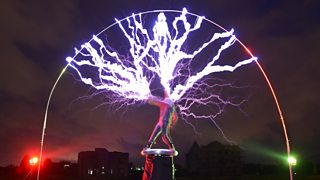Copper: From mining to microprocessors
The versatile metal that is vital for our electricity supply, mobile phones and new green technologies like solar power.
Copper is a metal that has been with us since the dawn of civilisation. The Romans used it to build their empire, and its high thermal and electrical conductivity led to the 19th century discovery of how to generate electricity and a revolution in telecommunications. Copper was even used to build the Statue of Liberty in New York, and it’s because of copper’s tendency to oxidise that the statue is no longer shiny brown but green. Today we still depend on this 'eternal metal', so called because it doesn’t decay or rust, and it has become a staple and necessary component in new green technologies like solar power and electric cars. But extracting copper has always been very damaging to human health and the environment - so how has our relationship with copper changed over the centuries?
Joining Rajan Datar to find out more about copper past and present is Nikita Sud, Professor of Development studies at Oxford University and the author of The Making of Land and The Making of India; the archaeologist Dr William Parkinson, who is a curator at the Field Museum, and Professor of Anthropology at the University of Illinois at Chicago; and Andrea Sella, Professor of Chemistry at University College, London.
Produced by Anne Khazam for the Βι¶ΉΤΌΕΔ World Service.
(Image: Stripped copper cables. Credit: Christoph Burgstedt/Science Photo Library via Getty Images)
Last on
Broadcasts
- Thu 20 Jan 2022 10:06GMTΒι¶ΉΤΌΕΔ World Service
- Fri 21 Jan 2022 00:06GMTΒι¶ΉΤΌΕΔ World Service
- Sun 23 Jan 2022 14:06GMTΒι¶ΉΤΌΕΔ World Service
Featured in...
![]()
Technology and innovations—The Forum
Machines, materials and methods that changed how the world works
![]()
Scientists, theories and discoveries—The Forum
People and principles that helped us understand how our planet - and our universe - work
Podcast
-
![]()
The Forum
The programme that explains the present by exploring the past




